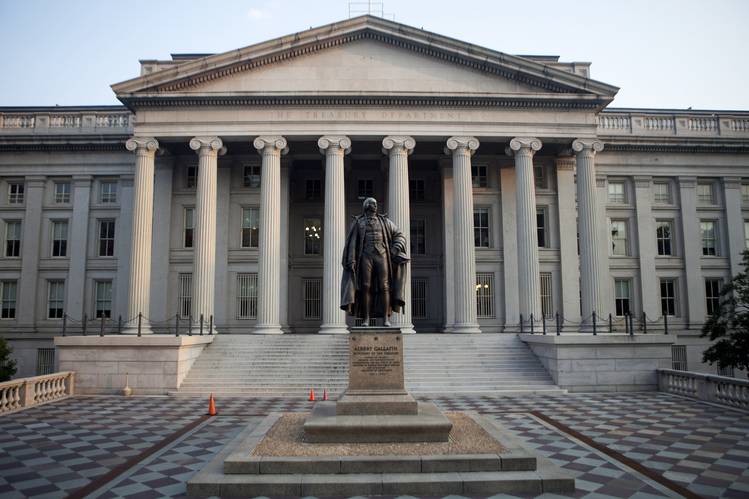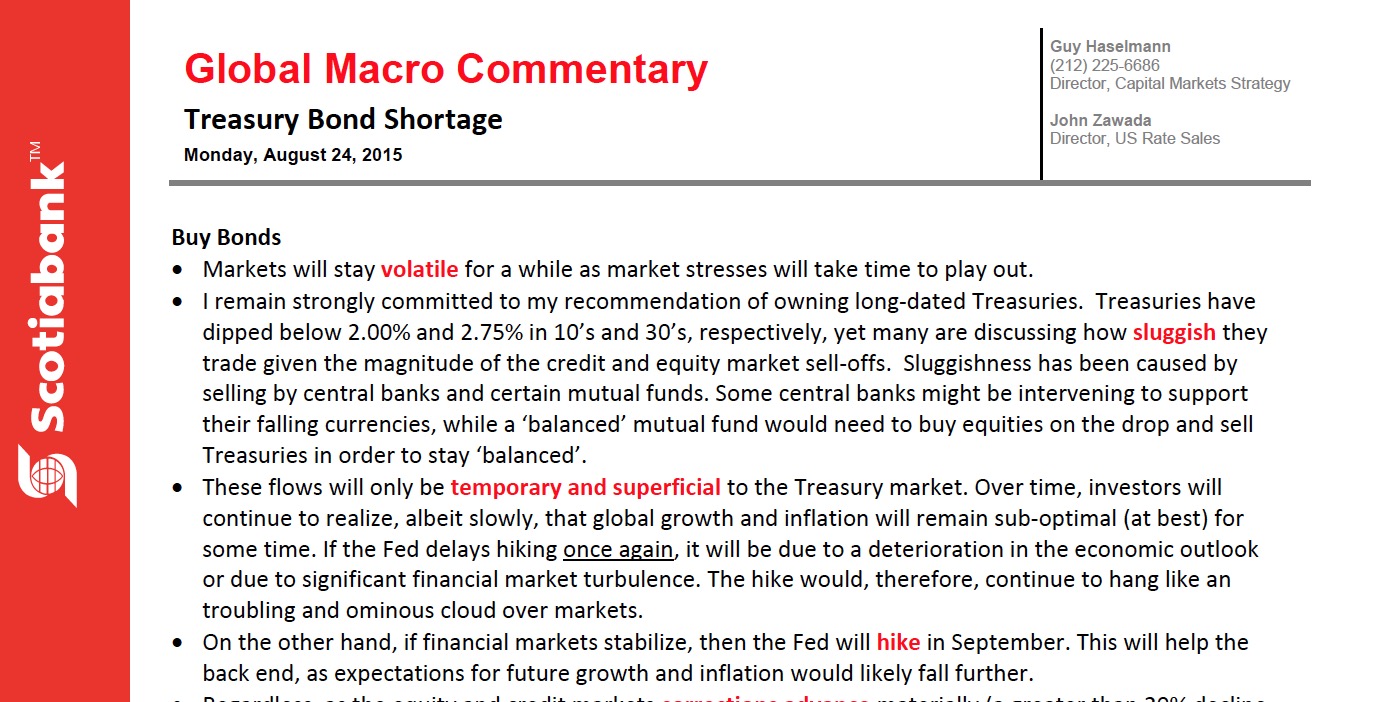Treasury Bond Shortage
by Guy Haselmann, Director, Capital Markets Strategy, Scotiabank GBM
Buy Bonds
• Markets will stay volatile for a while as market stresses will take time to play out.
• I remain strongly committed to my recommendation of owning long-dated Treasuries. Treasuries have dipped below 2.00% and 2.75% in 10’s and 30’s, respectively, yet many are discussing how sluggish they trade given the magnitude of the credit and equity market sell-offs. Sluggishness has been caused by selling by central banks and certain mutual funds. Some central banks might be intervening to support their falling currencies, while a ‘balanced’ mutual fund would need to buy equities on the drop and sell Treasuries in order to stay ‘balanced’.
• These flows will only be temporary and superficial to the Treasury market. Over time, investors will continue to realize, albeit slowly, that global growth and inflation will remain sub-optimal (at best) for some time. If the Fed delays hiking once again, it will be due to a deterioration in the economic outlook or due to significant financial market turbulence. The hike would, therefore, continue to hang like an troubling and ominous cloud over markets.
• On the other hand, if financial markets stabilize, then the Fed will hike in September. This will help the back end, as expectations for future growth and inflation would likely fall further.
• Regardless, as the equity and credit markets corrections advance materially (a greater than 20% decline in the S&P is reasonable), long-dated Treasury yields will drop considerably.
• Risk appetite has been driven predominately by central bank asset purchases. This morning, I was surprised to hear many utter “QE4”. Could this partially explain the ‘buy the dip’ mentality? Let me be clear. Barring a financial market catastrophe, QE4 will not happen. The hurdle is enormous. Criticism of central bank policies from both congressional parties is already so intense that there may be concern that a QE4 program could cause Congress to end the organization as we know it, or at least lead to a major restructuring. Risk versus reward, therefore, remains skewed to the downside for equities.
• Warning signs for risk assets have been building for months. Stresses first materialized in currencies and commodities before spreading into the junk bond and corporate bond markets. Market contamination has been methodically spreading through various sectors, finally spilling into equity markets last week. Since imbalances have been amassing for several years, the damage is far from over.
• The swift retreat in financial asset prices has not been deep enough or long lasting enough to find equilibrium. Investors have been too complacent for too long and have placed too much confidence in monetary accommodation’s ability to perpetually lift prices to ever-higher levels.
• In the last few months, I have outlined many fundamental reasons why investors should own long-dated US Treasuries. There are also many technical reasons to like them as well. There is simply a shortage of high-quality long-dated Treasury securities. They are a commodity whose demand exceeds supply. With this in mind, I have attached a note I wrote on July 14, 2014 entitled “Pension LDI Revisited”, which outlines some of those arguments. Investors should not under-estimate just how low yields on Treasuries (10 years and longer) can fall.
• “The more the state ‘plans’ the more difficult planning becomes for the individual”. – F.A. Hayek
Regards,
Guy
Guy Haselmann | Capital Markets Strategy
▬▬▬▬▬▬▬▬▬▬▬▬▬▬▬▬▬▬▬▬▬▬▬▬▬▬▬
Scotiabank | Global Banking and Markets
250 Vesey Street | New York, NY 10281
T-212.225.6686 | C-917-325-5816
guy.haselmann@scotiabank.com
Scotiabank is a business name used by The Bank of Nova Scotia
Global Macro Commentary August 24- Treasury Bond Shortage

















